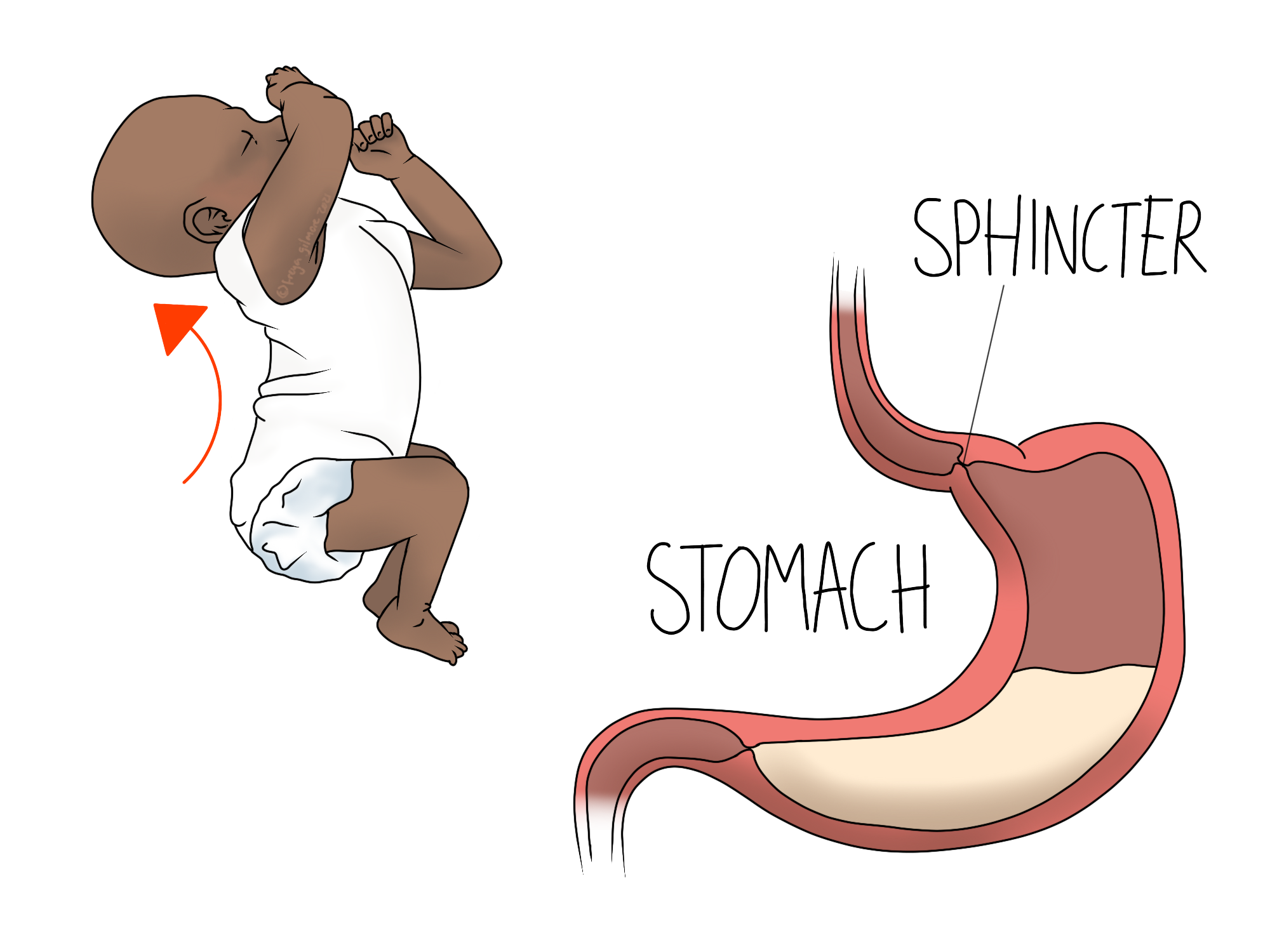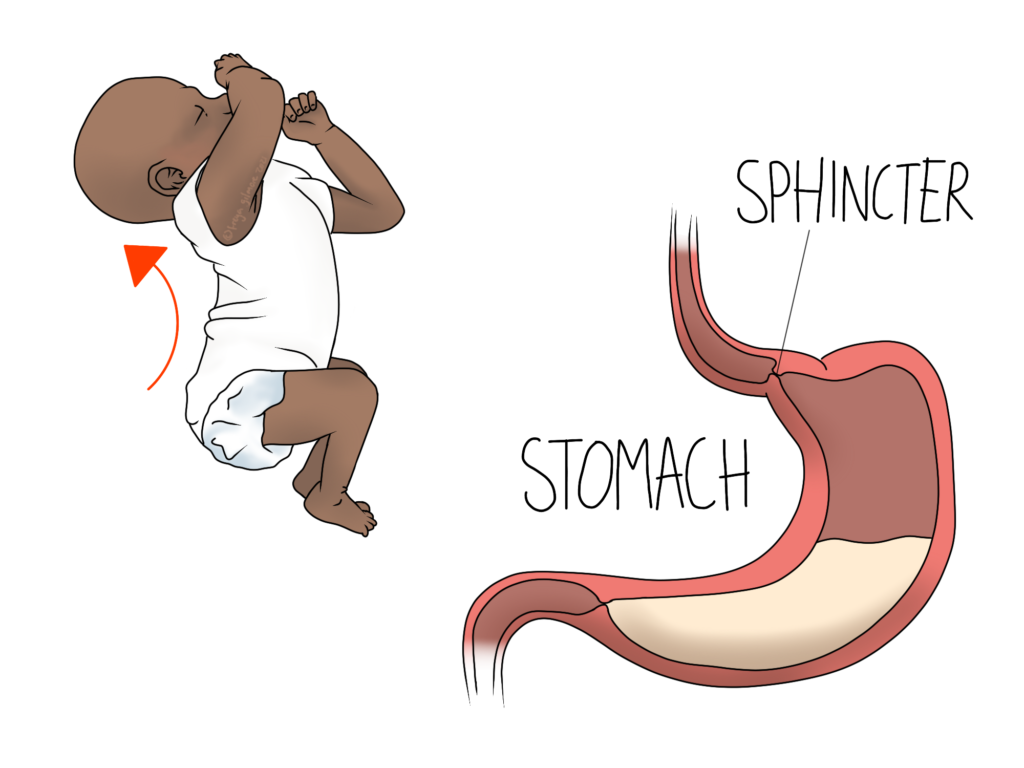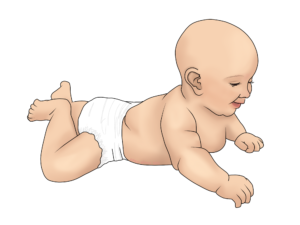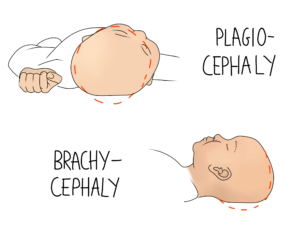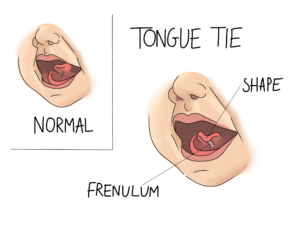Newborns are not the best communicators, and sometimes it can feel like you’ve tried everything to stop the crying to no avail. Crying and signs of discomfort, especially after a feed, may indicate reflux.
The Anatomy of Reflux
Very young babies are somewhat prone to developing reflux due to their under-developed anatomy. The sphincter at the top of the stomach is not as strong in newborns as with older babies, which is why symptoms tend to improve on their own before baby’s first birthday.
With this in mind, small amounts of spit-up after feeds may be considered normal. Bear in mind that it’s easy to over-estimate how much has been brought up when you look at it. It may give you some peace of mind to drop a teaspoon of milk or yogurt on a muslin to see how it looks.
When osteopaths treat adults with reflux, we look at how the diaphragm is working. The diaphragm is a large sheet of muscle that sits under the lungs and helps you to breathe. It has a hole in the middle for, among other things, the oesophagus to pass through. The stomach sits just below the diaphragm, so acts almost like another sphincter. Therefore, it makes sense that adults with reflux might also have problems with their diaphragm. Although this muscle does run deep, it attaches just under the ribs all the way around. We can work directly on this area from the front, as well as prescribing breathing and other exercises to keep it happy.
Silent Reflux
When reflux exists without visible spit-up, it is known as silent reflux. Baby might be swallowing the food back down, or it might not be travelling up the whole length of the oesophagus. But the irritation is still there, so the unsettled behaviour may be the same. Of course this is much harder to recognise, but the arching back may be a good indicator. If you suspect silent reflux, your osteopath can look for other clues in clinic.
When is Reflux a Problem?
Reflux is a problem if it causes your baby distress, or is severe enough to slow their healthy weight gain. A steady production of wet and dirty nappies is a good sign that your baby is getting enough food. If the number reduces, you should contact your health visitor or GP. A baby in distress with reflux is likely to arch back to try and get relief. This might be most obvious when they are lying down or you are trying to feed them.
You may also notice that your baby is harder to settle after a feed. In the evening, it may seem that they only want to be cuddled and won’t be put down to bed. You might initially interpret the behaviour as a sign of colic or neediness, but it might be as simple as reflux.
An Osteopathic Approach
Your osteopath will work alongside your GP to help your baby. The GP may prescribe medication to reduce the acidity of the stomach contents, which relieves the burning sensation. Your osteopath will assess the diaphragm and relax tight areas if they are present.
You can support your baby by keeping them upright after feeds for longer. If bottle feeding, you may also want to adjust the amount you feed them in any one sitting. Pace feeding may help here.
You can book an appointment for your baby here.

